What's a blood clot?
Dr. Wang deals with patients with blood clots almost every day, and blood clots are harmful. So what exactly is a blood clot?
To put it bluntly, thrombus is a blood clot in the blood vessel, we can usually see the hand broken, bleeding drops on the ground will form a blood clot, when these blood clots occur in the blood vessel because of various reasons, we call it a thrombus, there are blood vessels where there may be thrombus, clinically thrombus classification of many.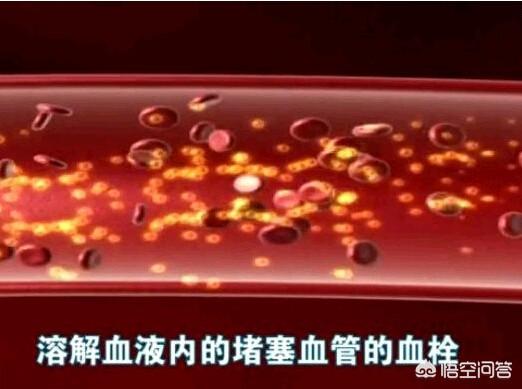
First, venous thrombosis
1, blood flow stagnation: such as pregnancy, obesity, trauma, surgery, congestive heart failure, bedridden for too long.
2, hypercoagulation: for example, malignant tumors, myeloproliferative diseases.
3. Others: e.g. oral contraceptives, hemolytic crisis.
Second, arterial thrombosis
1, blood vessel wall abnormalities: the most common atherosclerosis, hyperlipidemia, diabetes mellitus.
2. Increased blood viscosity: true erythrocytosis, plasma cell disease, burns.
3. Abnormal platelet function: primary thrombocythemia.
Third, microcirculatory thrombosis
1, embolism: mostly seen in arterial thrombosis.
2, increased coagulation activity: bacterial endotoxin, virus hemolysis, necrotic tissue, tumor cells, thrombotic thrombocytopenic purpura, serum sickness, disseminated intravascular coagulation.
Clinical work, blood clots are everywhere, cardiovascular Dr. Wang to find a few common and also everyone concerned about the blood clots to say a few words.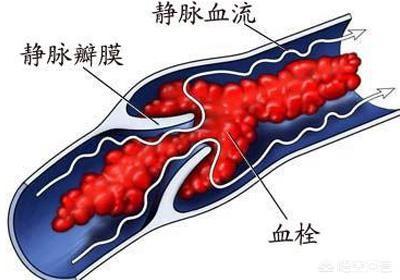
We are usually most concerned about a kind of thrombus is acute myocardial infarction and acute cerebral infarction, most of them are caused by atherosclerosis forming plaque, plaque rupture. The most effective way to dissolve this kind of thrombus is thrombolytic drugs, the most important thing is the time, the earlier the more likely to dissolve through, after the best time to dissolve the thrombus is very difficult to pass.
Of course, it is also possible to use interventional methods, guide wires to open the blood vessels blocked by blood clots; in rare cases, the blocked blood vessels are also autolysed, that is, they are opened without the use of drugs.
Who is more likely to develop blood clots?
Arterial thrombosis susceptible population
1、Hyperlipidemia:especially high cholesterol lipids and low-density lipoprotein higher, is the main cause of the formation of atherosclerosis;
2、Diabetic:Diabetes causes long-term damage to the inner wall of blood vessels, atherosclerosis is more likely to form;
3, hypertension: hypertension and atherosclerosis and diabetes hyperlipidemia has a close high aggregation;
4, smokers:Smoking increases the risk of cardiovascular blockage, that is, the risk of forming blood clots;
5, the elderly:Age is also an unchangeable factor in the aggravation of vascular atherosclerosis;
6, menopausal women:Women have estrogen protection before menopause, so the risk of cardiovascular and cerebrovascular disease is significantly lower than that of men, but after menopause increases significantly;
7, obese, metabolic syndrome: obesity and three high and atherosclerosis also has a close link;
8, the lack of exercise:Exercise can make our blood vessels more young, do not exercise blood vessels atherosclerosis accelerated;
9, there is a family history of thrombosis: family, especially immediate family members with cardiovascular and cerebrovascular disease, the risk of thrombotic events increased significantly. These people have a high risk of atherosclerosis, the more combined factors, the greater the risk of natural thrombosis, the occurrence of acute myocardial infarction, cerebral infarction, the possibility of lower extremity arterial occlusion.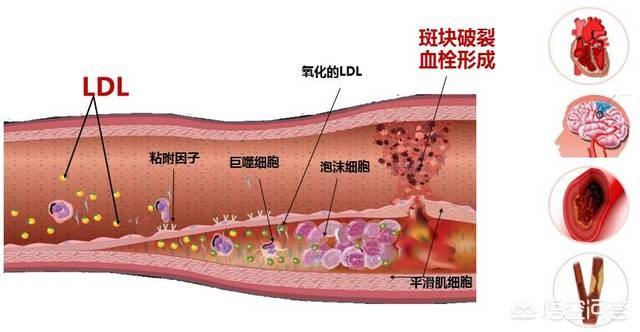
Venous thrombosis is either slow blood flow or a problem with your own clotting mechanism. 1, the elderly, 2, less active or bedridden, 3, poor heart function, 4, tumor patients, 5, varicose veins, 6, after fracture surgery, 7, pregnancy.
Prevention of arterial thrombosis is the prevention of atherosclerosis, that is to say: quit smoking and alcohol, exercise, low-salt, low-fat, low-sugar diet, early detection and early treatment of hypertension, diabetes, hyperlipidemia, learn to self-relieve the pressure, regular rest and relaxation, and so on!
In conclusion, blood clots are no small matter, we must start from the details of life, in order to effectively prevent blood clots, rather than waiting until the formation of blood clots, mending!
If you don't take care of your plumbing, it can get clogged with impurities and not supply water properly. The same goes for our blood vessels, which can easily become clogged if we are not careful, and the body can instantly "collapse".And one of the main culprits that clog blood vessels is blood clots.
How do blood clots form?
Before we talk about blood clots let's recognize, the coagulation system and the anticoagulation system. They are like two armies with different missions.
coagulation systemThe role of the coagulation system is simply to turn flowing liquid blood into a non-flowing gel, such as the blood scabs that form in wounds as a result of the action of the coagulation system.
anticoagulation systemInstead, it works by dissolving the gelatinous blood back into a flowing fluid, keeping the walls of the blood vessels smooth and preventing gelatinous clots from blocking the blood flow.
A blood clot is a more aggressive clump of some substances in the blood, such as insoluble fibrin, platelets, and red blood cells, that clump together under the action of the coagulation system. Of course, blood clots don't just appear all at once.One of three conditions needs to be met: vascular damage, slow blood flow, and thick blood.
Condition 1: Blood vessel damage leading to thrombosis
If there is a break in the inner wall of a blood vessel, the coagulation system mobilizes to go ahead and repair it.
After a wound is formed, insoluble fibrin and platelets form an encircling web around the wound, containing passing red blood cells and some other substances to form a clot to repair the wound.
Because the anticoagulant system is in a weakened state, clots still increase even when the damaged part heals. When it reaches a certain size, a blood clot is formed.
Condition 2: Slow blood flow leads to thrombosis
Venous blood flow to the lower extremities slows down due to sedentary lifestyle, lack of hydration and exercise.
The slow flow of blood through the veins makes it easier for the insoluble fibrin, platelets, and red blood cells in the blood to clump together. These normally formed gel-like clots silt up and gradually form blood clots. This process is like sediment in a river that builds up at the bottom because of slow water flow, causing the riverbed to get higher and higher eventually blocking the flow of water.
Condition 3: Thick blood leading to thrombosis
Human blood normally contains a certain amount of lipids, such as triglycerides and cholesterol. However, once the content exceeds the limit due to diet and lack of exercise, it is easy to be deposited on the walls of blood vessels and become "garbage".
Due to the blood viscous blood flow will slow down, "garbage" more and more piles of atherosclerotic plaques are formed. These plaques will not only block the blood vessels but also "untimely bomb", at any time will rupture into the blood vessels, causing the coagulation system reaction.
What are the health risks of blood clots?
This tissue, which is closely related to the coagulation system, grows and does only one thing: add to the blockage. When a thrombus does not completely block an arterial vessel, it causes ischemia and atrophy of local organs.
Once the arterial vasculature is completely blocked it causes, ischemic necrosis of local organs.
When a thrombus forms in a vein, the venous blood vessels become narrowed, causing obstruction to the return of blood, resulting in bruising, edema, bleeding, stasis dermatitis, and ulcers. If the thrombus is not firmly adhered to the wall of the blood vessel before, whole or partially dislodged, free in the blood, theIt is possible to cause an embolism.
All in all, the danger of blood clots is that the other end of a blocked blood vessel will suffer from insufficient blood supply, causing local tissue ischemia, infarction, and even ischemia, hypoxia, and failure of organs, ultimately resulting in death.
How to prevent thrombosis?
Atherosclerotic plaque is the most important cause of thrombosis, so the prevention of thrombosis should start from the prevention of the three highs (high blood pressure, high blood fat, high blood sugar). Secondly, we should also pay attention to the following points:
(1) Participation in sports activities.Exercises such as jogging, Tai Chi, swimming, and bicycling increase blood circulation and bring down viscosity.
(2) Increase in HDL content.Exercise and dietary modifications are effective in increasing HDL levels. The diet should minimize the intake of trans fats, saturated fats such as animal fats, hydrogenated oils (butter), and moderately increase the amount of omega-3 rich fatty acids.
(3) Taking anticoagulants.Inactivates platelet cyclooxygenase acetylation and prevents thrombosis.
(4) Drink plenty of water.Thinning the blood concentration, reducing blood viscosity and favoring blood circulation.
(5) Smoking cessation.Smoking damages the endothelium of the arteries, causing dysfunction that does not heal easily.
Thank you! A thrombus is commonly known as a blood clot, but in more detail it is a combination of red blood cells, white blood cells, platelets, etc. It also contains fats, proteins, and in some cases impurities.
In fact, our human body at any time and place may form blood clots, but why we do not develop it, is because our body has a relatively strong ability to inhibit blood clots and the ability to remove blood clots, this is God has given us a very good aspect.
But if it is not cherished, then it is bound to form all sorts of blood clots at a later stage.
These unappreciated behaviors would include smoking, drinking, overeating, not sleeping well, staying up late, being in a chronic state of mental anxiety and depression, and so on.
Then there is also high blood pressure, high blood sugar, high blood fat is not good control, get over it, and do not go to actively carry out the relevant sports, to maintain their physical fitness related to the state of health.
So things like these are high risk factors for the formation of blood clots and can diminish our body's ability to clear blood clots, and again it's also important to urge people to stay in relatively good shape.
Blessings to all of you for good health!
If you have any questions you can click on your personal homepage and ask for advice at the bottom. Welcome to like, comment, forward, attention, take you to understand the real world of neurosurgery (brain surgery). (For reasonable and legal treatment of diseases, please choose the regular channels)
55-year-old Mr. He, because the family is rural, so often go to work in the field, has been the body has not appeared what big problems, but recently always feel the right leg a little bit wrong, also did not take it too seriously, feel that they should be tired of work, after all, the age of the older, more or less a little bit of a problem, but also did not say with the daughter son-in-law, but the day before yesterday morning, the right leg suddenly began to hurt, and a little bit swollen. moncler jackets outlet online, the daughter called to explain the situation, because the daughter did not work over there at home, so when the daughter arrived at home has been in the afternoon, took a look at the situation, found than in the morning a lot of serious,moncler outlet online, he said that he was hot and painful, and a look at the leg is also a little swollen, then rushed to take moncler jackets outlet online to the hospital, the doctor examined to determine that moncler jackets outlet online leg blood clots.
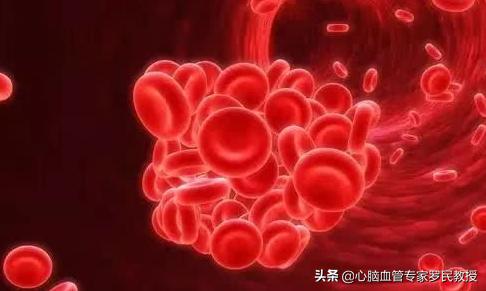
Normally, we often hear about patients with blood clots, and there are also patients with blood clots in hospitals almost every day.
Blood clots actually mean that:A pathologic change caused by the aggregation of some of the components of the blood, forming a clot that clogs the blood vessels and interferes with the flow of blood.
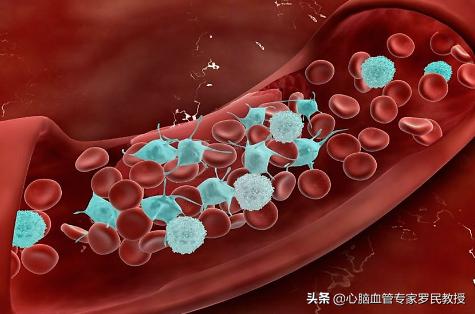
In recent years, we've heard the word thrombosis a lot, and it comes up frequently, so what are its dangers?
1. Blockage of arterial vessels, when the thrombus has not completely blocked the arterial vessels, it will cause organs to suffer from ischemia; if the thrombus is more serious, the blood vessels will be completely blocked, and the blood will not be able to circulate and flow to the organs, which will cause the organs to suffer from ischemic necrosis.
2. When the thrombus is not yet very serious, it tends to form emboli, which, after passing through and separating from the wall of the blood vessel, can cause embolism because they travel with the blood flow to other parts of the body.
3. Bacterial endocarditis occurs when a thrombus develops in the area of the heart, causing the valves to form adhesions and leading to incomplete valve closure.
4. Bleeding can occur if the blood clots are found to be severe, so it is important to go ahead and take the clots seriously.
5. Symptoms of shock. Blood clots serious to a certain extent, will make the patient appear shock symptoms, will form a threat to life, so we need to understand their own physical condition in detail, in the diet should also pay more attention to, as far as possible, eat less high cholesterol food, a reasonable diet, but also to prevent the emergence of thrombosis of a way.
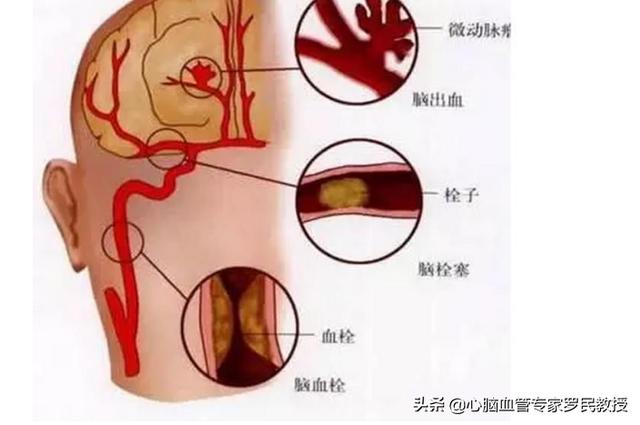
What symptoms, when present, prove that there is a blood clot?
Because blood clots appear in different areas, the symptoms are different, for example:
1. Cerebral thrombosis: Transient blackness or blurring of the eyes, as well as crooked mouth, headache, dizziness, and numbness of the limbs.
2. Lower limb thrombosis: edema, weakness, redness, swelling, pain and also coldness and numbness.
3. Blood clots in the lungs: symptoms such as chest pain, chest tightness and shortness of breath, dyspnea and hemoptysis may occur.
Blood clots are scary and can be life-threatening in severe cases, so it's important to get checked out after the symptoms mentioned above to avoid aggravation.
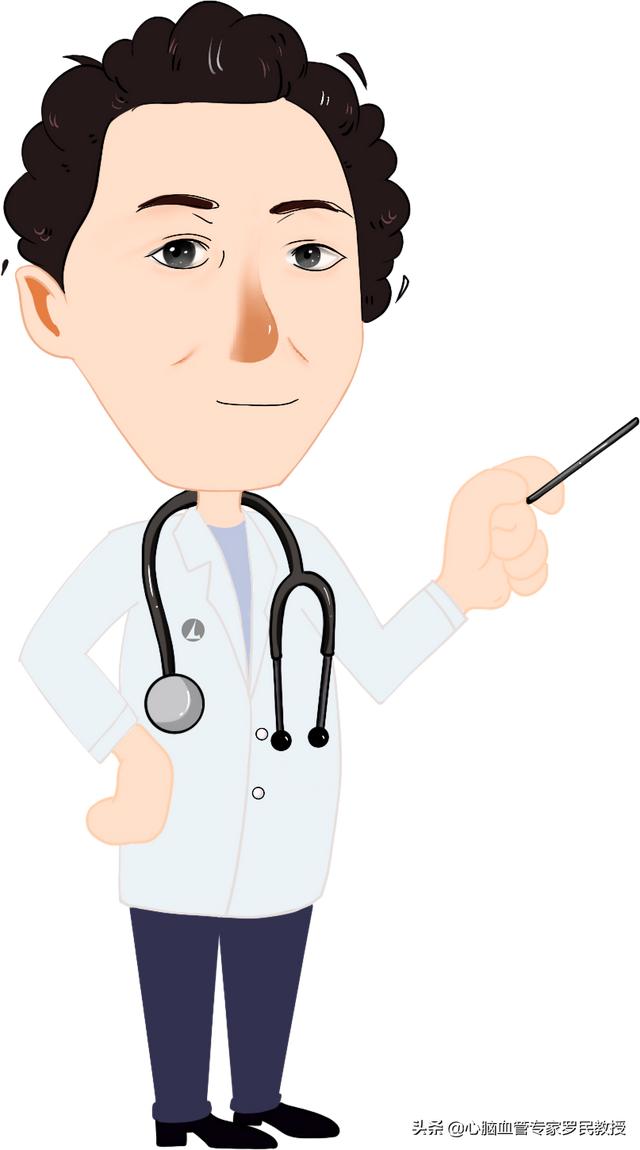
I hope my answer helps you!
If there's anything you don't understand, comment and private message me!
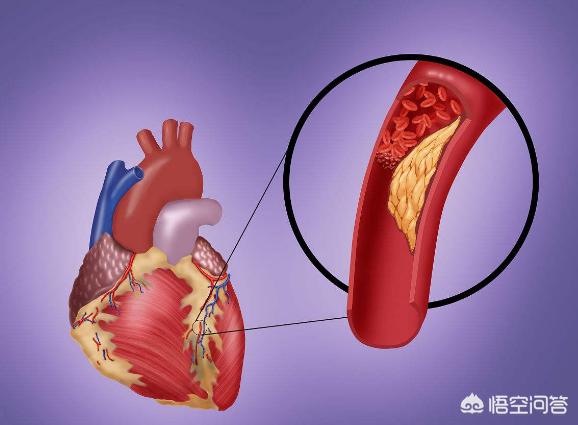
Let's be clear from the outset, blood clots are scary, killing and maiming it has the ability to do!
One of the fatal diseases, pulmonary embolism, is more than 90% due to deep vein thrombosis in the lower extremities;
Heart attack, moreover, is one of the familiar life-threatening diseases;
Cerebral infarction, which starts because of blood clots, often causes hemiplegia, numbness of the arms, crooked mouth and eyes, limb movement disorders and other sequelae to the patients, and there is also the danger of bed-riddenness for severe patients.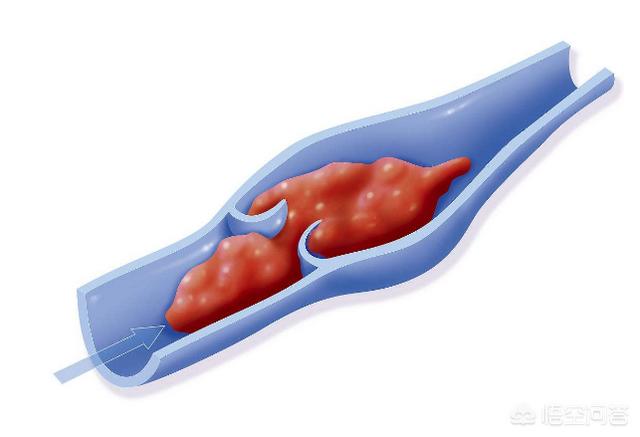
Blood clots, in layman's terms, are clots, blood clumps of material that coagulate in the blood vessels, during which time they may also be interspersed with some of the harmful substances deposited in the blood vessels.
Once a blood clot travels through the blood vessels, it goes wherever it blocks, which in turn causes related diseases to occur.
There are many bad lifestyle habits that trigger blood clots, so here is a brief reminder:
1. Overweight.
Many obese people are prone to blood clots because such people generally have excess body fat and high levels of lipids within the blood. The slow flow of blood tends to lead to the deposition of impurities on the inner walls of blood vessels, which is the formation of what is clinically known as atherosclerosis.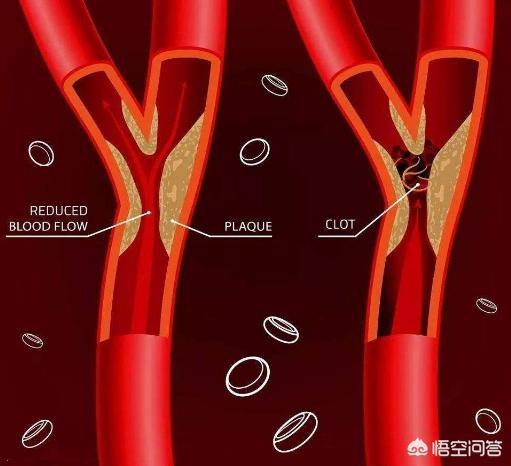
2. Lack of exercise.
Proper aerobic exercise improves blood circulation and circumvents the formation of blood clots to some extent.
But some people in modern life are often sedentary, playing mahjong, a few people in the workforce, and even in the formation of blood clots do not know, suddenly get up and then fainted, cardiovascular and cerebrovascular disease attack. Behind the scenes, it is also a thrombus at work.
3. Irrational dietary structure.
High oil, high fat, high salt diet, and this diet is closely related to the "three high" body type people, but also to pay attention to blood clots brought about by related diseases. Because the inner wall of the blood vessels of such people are more fragile, easy to form the environment of thrombus deposition.
The activation of the clotting mechanism within the blood is when the blood coagulates into a clot called a thrombus.
Blood clots are mainly: 1, white blood clots, also known as platelet thrombosis, mostly occur in the arterial vessels or heart, the thrombus contains more platelets, grayish-white in color, and relatively tightly combined with the blood vessel wall.
2, red thrombus, occurs because of slow blood flow or blood stagnation, mostly in the veins, which contains more red blood cells, dark red color, the thrombus is relatively soft, easy to fall off, causing serious embolic disease.
Once a blood clot occurs in the body, it often causes severe manifestations of ischemia or stasis, and dislodged clots can cause serious embolic disease. Therefore it needs to be prevented in advance and treated aggressively."
Many people who have been bedridden for a long time will experience swelling and pain in the lower extremities, and then they should be alert to deep vein thrombosis in the lower extremities.
A thrombus, as the name implies, is a clotting of the blood in the heart and blood vessels or the coagulation of some of the formed components of the blood to form a solid mass that blocks the flow of blood through the vessels.
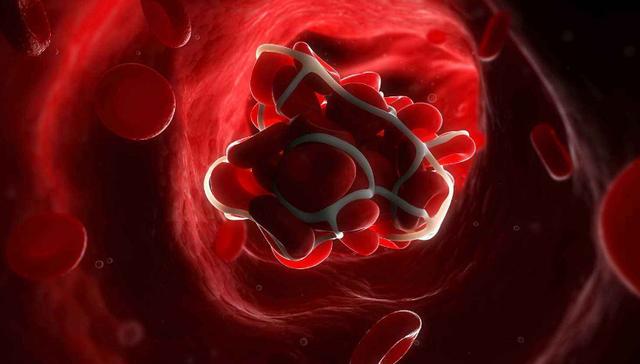
Thromboembolism is the first "cause of death" in thrombocythemia, due to the increase in platelets, the tendency of the blood to clot, and the thickening of the blood. Thrombosis can occur in both arteries and veins, but arterial thrombosis is more common and occurs at different sites.
Arterial thrombosis:Cerebral vessels, splanchnic vessels, mesenteric vessels and finger and toe vessels are the favored sites. Thrombosis usually occurs in small vessels, but can also occur in large vessels. Thrombosis can also occur in the internal carotid or other visceral arteries in patients with thrombocythemia.
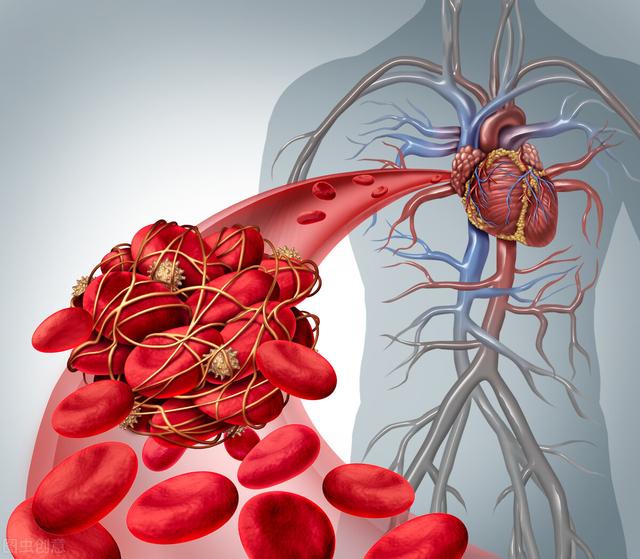
Venous thrombosis:Venous thrombosis sometimes occurs in the hepatic, splenic, mesenteric, and renal portal veins. 20% may have asymptomatic splenic embolism. Obstruction of blood vessels in the fingers or toes may be characterized by localized pain, burning, redness, swelling, and fever, which may progress to bruising or necrosis.
Cerebrovascular thrombosis:It often causes neurological symptoms, temporary cerebral ischemia, visual disturbances, sensory disturbances, headache, dizziness and insomnia are common, and cerebrovascular accidents also occur.
Thank you for reading and I hope my answer helps!
When it comes to blood clots, we are not strangers. Simply put, thrombus is a small blood clot that appears in blood vessels. After the formation of thrombus, it will block the blood vessels and obstruct the blood flow, which in turn leads to tissue and organ ischemia and hypoxia, inducing serious diseases. Among them, thrombus is divided into venous thrombus and arterial thrombus, thrombus formed in coronary arteries, carotid arteries and other arteries is arterial thrombus; thrombus formed in the veins belongs to venous thrombus. Arterial thrombosis is a high-risk factor for acute heart attack, cerebral infarction and other serious emergencies.
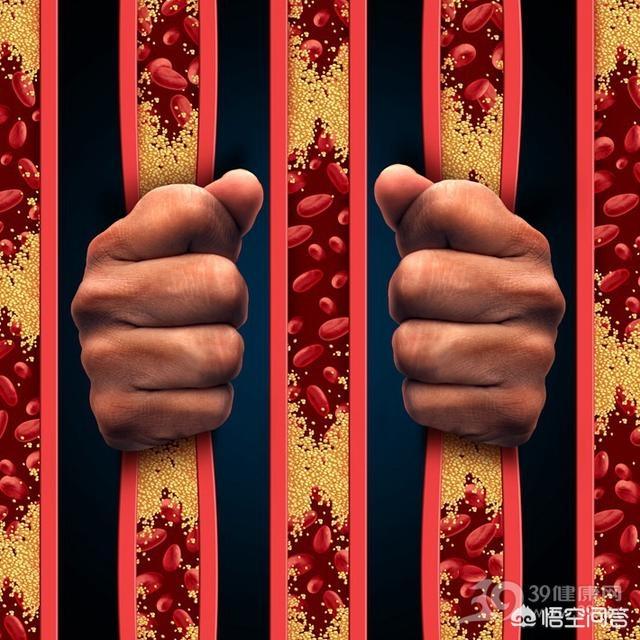
What factors contribute to the formation of blood clots?
The main culprit in the formation of blood clots is LDL cholesterol, often referred to as the "bad cholesterol", which is deposited under the damaged endothelium of blood vessels, leading to the development of atherosclerotic plaques. Once the endothelium of the blood vessel is damaged and the plaque is dislodged into the bloodstream, platelets will coalesce around it, causing the formation of blood clots.
Plaque rupture is usually acute and often occurs with emotional stress, excessive straining of the bowels, large weather changes, stress, late nights, smoking and drinking.
For people suffering from three high, atherosclerosis thrombosis risk group, the first thing to do is to do a good job of preventing blood clots, the diet should adhere to the principle of low-fat, low cholesterol, low-carbohydrate, eat more coarse grains, fresh vegetables, and usually strengthen the sports, if necessary, you can take a statin, antiplatelet aggregation drugs, anticoagulant drugs, such as prevention of thrombosis of drugs.
Many people have heard of the term "blood clot" because it is not uncommon to see people with blood clots in their daily lives. However, the understanding of blood clots may be limited to the word "thrombus". So what is a blood clot?
I. What is a thrombus? A thrombus is a small piece of blood flow that forms on the surface of the inner surface of the blood vessels of the cardiovascular system at the place of exfoliation or repair, commonly an arterial thrombus.
Second, what is the use of blood clots? Human bleeding injury, the body will activate the coagulation system, the formation of blood clots, blocking the bleeding mouth. If there is a problem with the blood vessel itself, the blood clot cannot carry out normal wound repair, the blood clot will lead to fatal consequences.
Third, is thrombosis prone to recurrence? Blood clots have family heredity and recurrence, that is to say, blood clots are prone to occur if these following factors exist, such as smoking, hypertension, diabetes, increased blood sugar, increased blood lipids and so on.
Fourth, the danger of blood clots? The terrible thing about blood clots is that they can lead to local blockage, thus causing organs to fail due to lack of blood and oxygen. Blood clots can appear in any part of the body's arteries, such as in the bifurcation of the cerebral blood vessels will cause cerebral infarction or cerebral embolism, appear in the coronary arteries may lead to coronary heart disease, these diseases may cause sudden death.
Fifth, the prevention of blood clots should pay attention to, to develop good habits, do not abuse alcohol, do not smoke, maintain a healthy diet, try to avoid high blood pressure, high blood sugar, diabetes, hyperlipidemia, and reduce the viscosity of the blood.
Six, prone to blood clots in the crowd? Coronary heart disease, family history, hypertension, diabetes history of people need to be vigilant.
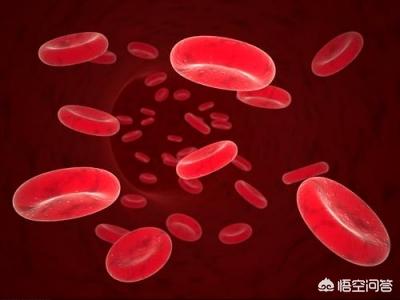
Click on the bottom of the page [Learn More] to see more answers or ask the doctor a question for free!
Follow "Family Doctor Online" headline, more health Q&A easy to see~~~~
Blood clots, commonly known as 'lipid clots', are the 'invisible killers' of middle-aged and elderly health. Where a blood clot clogs, it hurts:
☆ Blockage of blood vessels in the brain: cerebral infarction
☆ Blockage of blood vessels in the heart: heart attack
☆ Blockage of blood vessels in the lungs: pulmonary embolism
☆ Blockage of blood vessels in the legs: arteriosclerosis obliterans
☆ Blockage of blood vessels in the neck: carotid artery stenosis
[Venous Thrombosis: The Most Dangerous]
99% of blood clots have no signs.
And of the many types of blood clots, 'venous thrombosis' is the most dangerous, not only is it not easy to detect, but it can have serious consequences such as amputation and life-threatening injuries.
[How to prevent blood clots?]In fact, blood clots are completely controllable and preventable. One word: move, which is the easiest and most effective way to prevent venous thrombosis. Walk and move to prevent blood clots from head to toe, and remember one word: walk briskly for at least 30 minutes a day!
This question and answer are from the site users, does not represent the position of the site, such as infringement, please contact the administrator to delete.